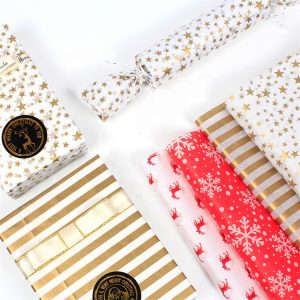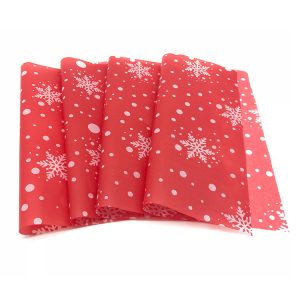The history of wrapping paper can be traced back centuries, and it has evolved over time to become an integral part of gift-giving and celebrations. Here’s an overview of the history of wrapping paper:
- Early Beginnings: The practice of wrapping gifts can be traced back to ancient civilizations. In China, as early as the 2nd century BCE, gifts were wrapped in silk and other luxurious fabrics, symbolizing the high value and importance of the offerings. In Japan, during the Nara period (710-794 CE), gifts were wrapped in a cloth called “Noshi” to symbolize good luck and good wishes.
- Victorian Era: Wrapping paper as we know it today started gaining popularity in the 19th century, particularly during the Victorian era. In the 1850s, the first commercially produced decorative wrapping paper was introduced in England. It featured elaborate designs, often inspired by nature, and was made using woodblock printing.
- 20th Century Innovations: In the early 20th century, advancements in printing technology allowed for more complex and colorful designs on wrapping paper. The popularity of wrapping paper increased significantly, becoming a common practice in many cultures for various celebrations, including birthdays, holidays, and weddings.
- Gift-Wrapping Culture: The modern gift-wrapping culture owes much to the rise of consumerism in the 20th century. Retailers and department stores began to emphasize the importance of presentation, encouraging customers to buy wrapping paper and accessories to make their gifts look more appealing.
- Mass Production and Patterns: As mass production techniques improved, wrapping paper became more affordable and accessible to the general public. It also led to the introduction of a wide variety of patterns, colors, and designs, catering to different tastes and occasions.
- Environmental Concerns: With growing environmental awareness in recent decades, there has been a shift towards more sustainable and eco-friendly wrapping paper options. People are increasingly opting for recycled paper, plantable paper, or reusable fabric wraps to reduce waste.
- Cultural Influences: Different cultures have their own unique gift-wrapping traditions and materials. For example, in Korea, “Bojagi” is a traditional wrapping cloth used for various occasions. In India, gifts are often wrapped in bright and colorful fabrics, and in some cultures, the art of wrapping gifts is just as important as the gift itself.
Wrapping paper has come a long way from its humble beginnings,
















